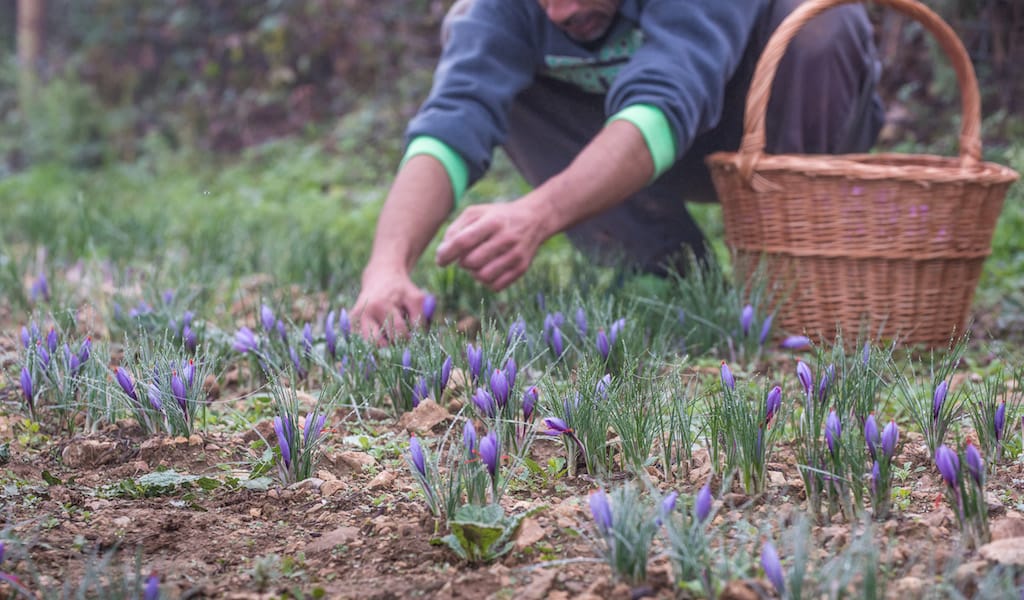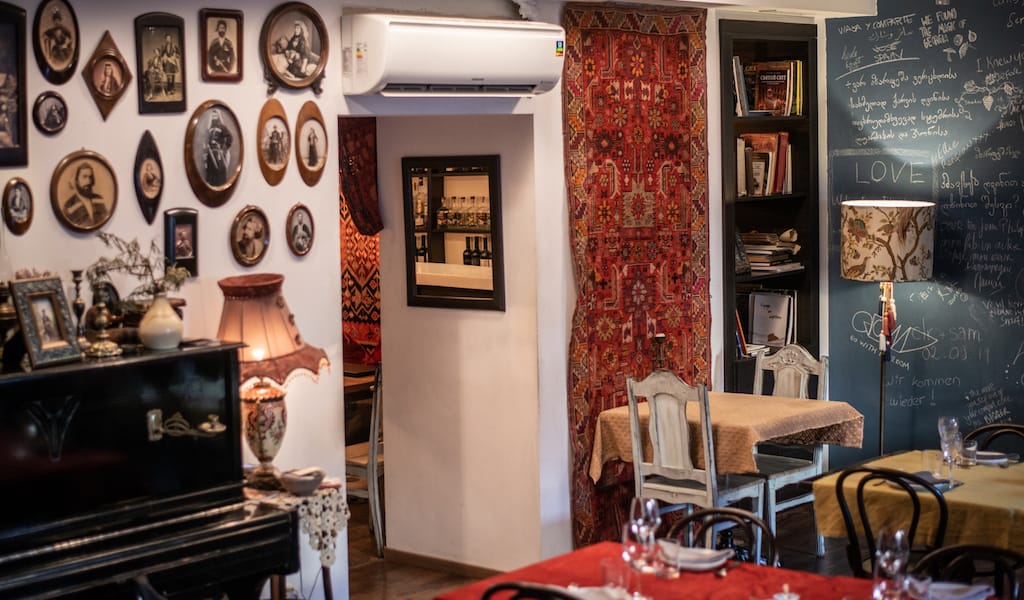Saffron may be most commonly associated with Iran, currently the world’s largest producer of this costliest of spices, but it has a long and storied history across the Mediterranean, particularly in Spain. Once an important saffron producer and trading center, Catalonia has seen a resurgence in saffron cultivation in recent years.
The spice, which comes from the Crocus sativus, a fall-flowering crocus, has a long history; ancient civilizations, including the Persians, Egyptians, Greeks, Romans and more, put saffron in all sorts of foods and drinks, and also used it for medicinal purposes and as a dye. The common belief is that saffron was introduced to the Iberian Peninsula by the Moors in the 9th or 10th century. It’s often mentioned as an essential spice – the only one locally produced in the Kingdom of Aragon – in the 14th-century recipe book El Llibre de Sent Soví (The Book of Sent Sovi), the oldest surviving culinary text in Catalan.
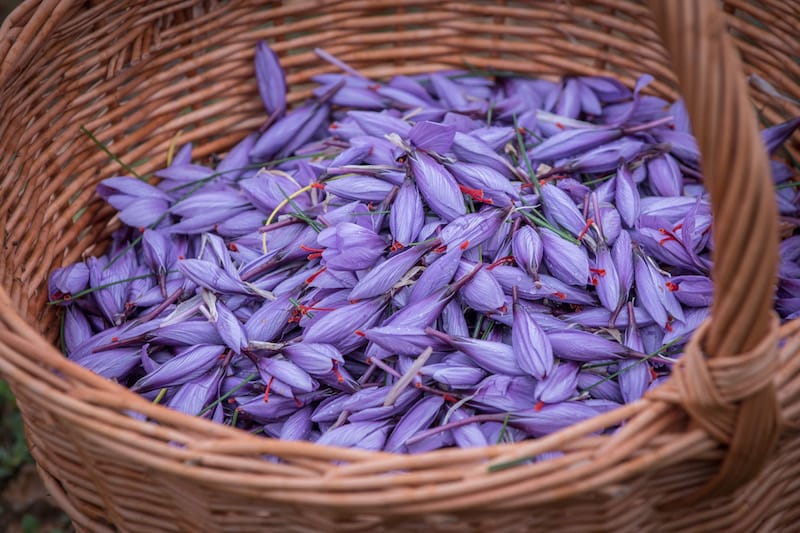
Many villages in Catalonia were large centers of saffron production and trading in the 14th century, as evidenced by the different taxes and laws that were created to ensure the authenticity of this red-tinged treasure, which was not only sold in the local markets, but also exported to other European cities. Different conflicts and events in the 15th century, however, led to the demise of Catalonia’s saffron monopoly, and cultivation of the spice spread to the south and west of Spain: Aragon, Valencia, Andalucía and Castilla-La Mancha, which is still Spain’s main producer of saffron to this day (complete with its own Protected Designation of Origin or P.D.O. stamp).
In the last 50 years, there has been a drop-off in Spanish saffron production, with the number of hectares of land dedicated to growing the Crocus sativus decreasing from 4,000 in the 1970s to just under 100 today. Yet despite this overall decline, a number of growers in Catalonia are rediscovering the legacy of saffron cultivation.
The harvest of this precious red-tinged spice is no easy feat.
One of the pioneers behind this resurrection is Safrà de les Garriges, a cooperative located in the Lleida province, a region already well known for its outstanding extra virgin olive oil. According to Manuel Ramírez, the president of the cooperative, the area’s alkaline soil and somewhat low humidity levels provide the best environment for all types of cultivation. Their small-batch, artisanal saffron can be purchased at the olive oil shop Olisal in Barcelona (Travessera de Gràcia, 149, Gràcia). But a better way to get to know their product is to go to the Festa de Rosa del Safrá, a festival that celebrates the end of the saffron harvest on October 28.
A bit further north, in the village of Llimiana in the Montsec Range, one of the centers of saffron production in medieval times, Safrà del Montsec is another company that has dedicated itself to the expensive spice. This small family business offers an extremely refined product – they are members of the Slow Food organization and their saffron is certified organic by a number of regulating bodies.
The harvest of this precious spice is no easy feat, which may well explain the overall drop-off in the number of Spanish producers over the past 50 years. The delicate crocuses must be picked by hand, and the fruits of this harvest are meager once processed – 200,000-250,000 flowers are needed to make one kilo of saffron (the spice comes from the flower’s three tiny red stigmas, which is the female part of the plant where pollen lands). The harvest begins in the middle of October and lasts for the blooming period, usually between 20-30 days.
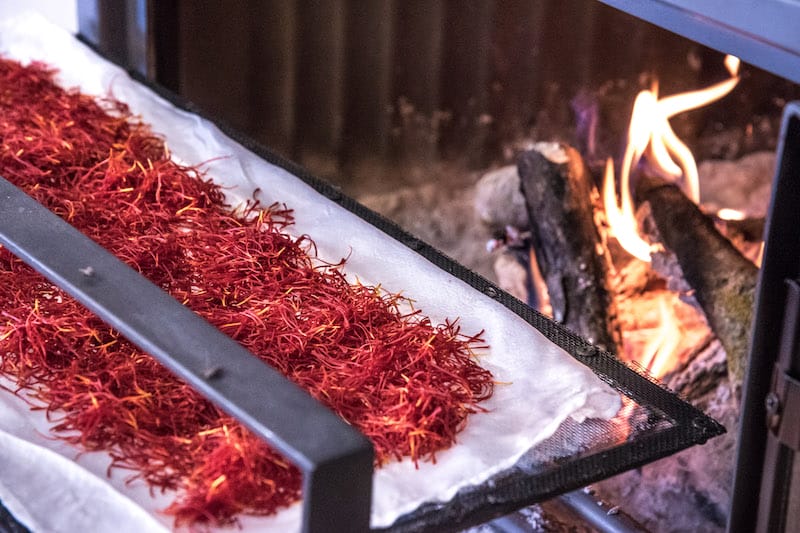
The lilac-colored flowers are picked in the morning, before the hottest hours of the day arrive, when a subtle fog still lingers over the soil and the petals are covered with dewdrops. It requires a certain level of skill to pick the crocuses while maintaining the integrity of the vibrant red stigmas, which cheerfully poke out of the top of the flower. Since the aim is to keep the stigmas in perfect condition, the crocuses are usually picked when they are still mostly closed so as to avoid pollination by bees.
After the flowers are picked, the three stigmas are removed from the main stamen and carefully dried next to an oak wood fire. The result is saffron with an intense red color and flavor, but relatively soft aroma – a product of the highest quality that is used by Michelin-starred chefs like Carme Ruscalleda and sold in select shops in Barcelona, like the gourmet deli La Garriga Sarrià (Carrer de Jacinto Benavente, 8, Sant Gervasi) and the venerated herbal shop La Herboristeria del Rei (Carrer del Vidre, 1, close to Plaça Reial).
Editor’s Note: Autumn has officially arrived, and with it comes an updated batch of Fall-Winter Eatineraries, CB’s seasonal self-guided food itineraries for travelers. The 2017-2018 Barcelona Eatinerary has the inside scoop on where to go for everything from the best cup of hot chocloate and xurros to the heartiest traditional plate of winter trinxat in town.
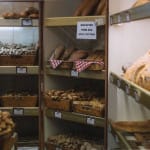 March 15, 2016 Building Blocks
March 15, 2016 Building Blocks
All over Athens (not to mention the U.S. and other parts of the world), one of the […] Posted in Athens July 18, 2018 Casa Ideal
July 18, 2018 Casa Ideal
In an ideal world, all fish restaurants would be like Casa Ideal, with its fresh red […] Posted in Lisbon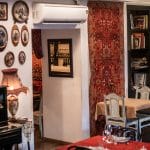 September 5, 2023 Azarphesha
September 5, 2023 Azarphesha
Up above Freedom Square where the Sololaki and Mtatsminda neighborhoods blend together, […] Posted in Tbilisi
Published on October 13, 2017
Related stories
Get a taste of Zea on our Athens culinary walks
March 15, 2016
AthensAll over Athens (not to mention the U.S. and other parts of the world), one of the hottest grains around is also among the oldest known to man. While farro, or zea, as it’s known in Greek, has been found in excavations of prehistoric settlements in parts of what was once Ancient Greece (the oldest,…
July 18, 2018
LisbonIn an ideal world, all fish restaurants would be like Casa Ideal, with its fresh red mullet, proper fish stews with rice, lovely staff taking care of your orders and affordable prices. Also in an ideal world, we would have visited Casa Ideal much earlier. We first heard about the restaurant, which for 40 years…
September 5, 2023
TbilisiUp above Freedom Square where the Sololaki and Mtatsminda neighborhoods blend together, there is a 100-year-old building with an apartment five steps below the sidewalk. It’s a warm, intimate space, part living room, part museum. A massive collection of wine glasses hang from the ceiling, 19th-century framed portraits of Georgians decorate one wall above a…







































